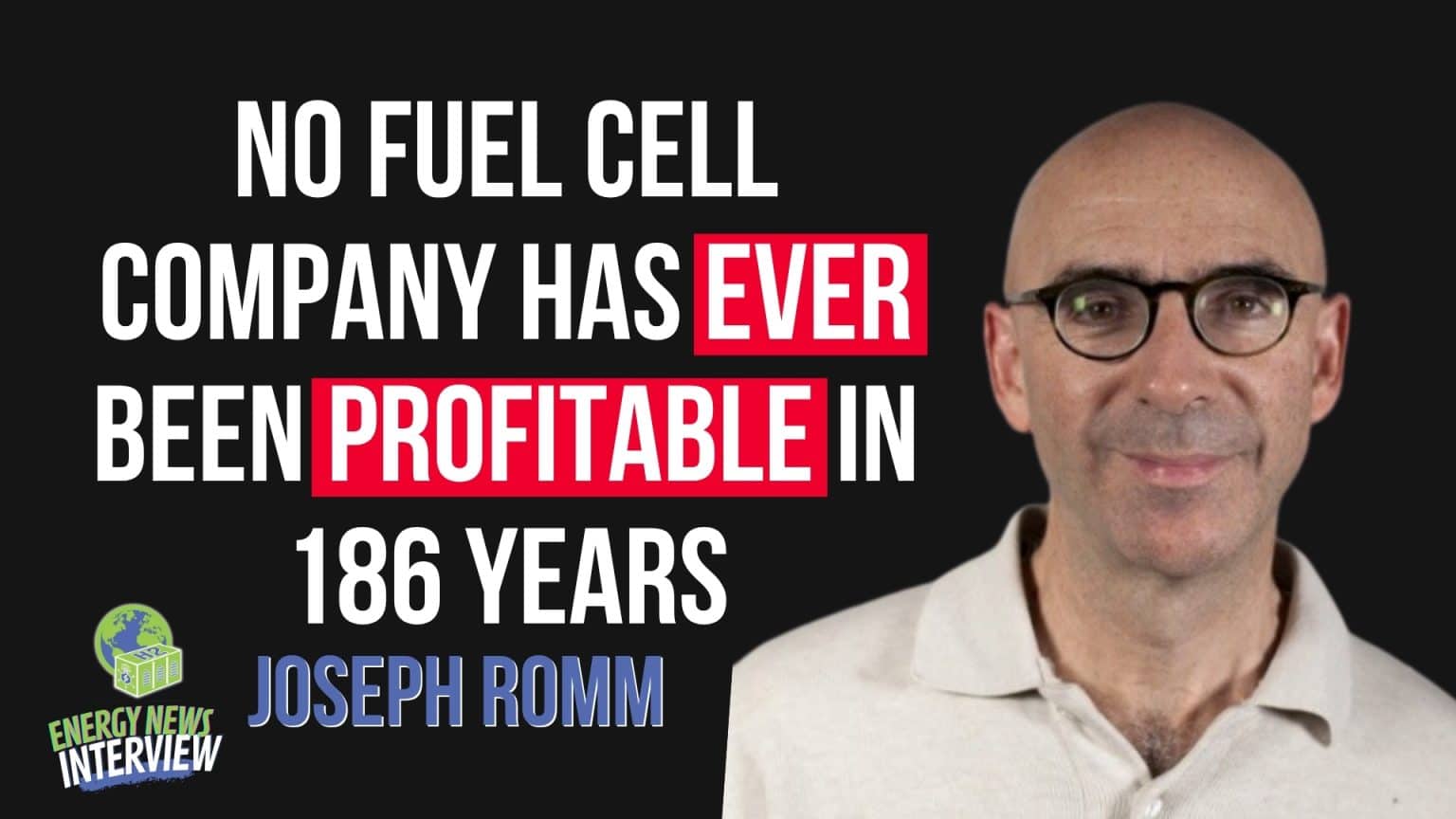Replacing global hydrogen production with green alternatives would demand the entire output of the U.S. electrical grid. This stark reality underscores a fundamental truth Joseph Romm, physicist and former U.S. Department of Energy (DOE) official, has emphasized for two decades: hydrogen’s crippling inefficiency as an energy carrier makes it unfit for mass decarbonization.
WATCH THE FULL INTERVIEW
Romm’s initial DOE work in the 1990s involved boosting hydrogen R&D, driven by apparent advances in fuel cell technology and political momentum. Early promises—like onboard gasoline reformers enabling hydrogen vehicles without new infrastructure—proved illusory. “Arthur D. Little said they’d crack on board reforming. By the late ’90s, they admitted it was impossible,” Romm notes. This collapse exposed hydrogen’s core vulnerability: its logistical nightmare.
The Physics Problem
Hydrogen’s inefficiency is rooted in thermodynamics. Using renewable electricity to power a vehicle via hydrogen involves:
- Electrolysis (70-75% efficiency): Converting electricity to hydrogen loses 25-30% of input energy.
- Compression/Transport (80-85% efficiency): Storing and moving the diffuse gas incurs further losses.
- Fuel Cell Conversion (40-60% efficiency): Reverting hydrogen to electricity wastes over half the remaining energy.
This cascade results in a 20-25% round-trip efficiency—versus >80% for battery-electric vehicles (BEVs). “Throwing away 75% of renewable electricity is indefensible when renewables were expensive. Today, it’s catastrophic for decarbonization speed,” Romm argues.
Distribution and the Stranded-Asset Trap
Hydrogen’s low energy density requires costly new infrastructure—pipelines, compressors, and stations—estimated to be in the hundreds of billions globally. This creates a fatal chicken-and-egg dilemma: manufacturers won’t scale vehicles without fueling networks, and infrastructure investors won’t build without market-ready vehicles. “Gasoline’s trillion-dollar sunk infrastructure cost is an insurmountable moat,” Romm states. Electricity, by contrast, leverages existing ubiquitous grids.
Failed Promises and Shifting Goalposts
Despite decades of hype:
- No fuel cell company has ever achieved net profitability.
- Electrolyzer prices rose 40-50% from 2022-2024, shattering projections of 10% annual cost declines.
- BloombergNEF’s 2024 update projects green hydrogen costs in 2050 at 3x earlier estimates, citing material constraints and absent economies of scale.
“Hydrogen advocates assumed it would replicate solar’s cost curve, ignoring that electrolyzers lack modularity and deployability—the key drivers of such declines,” Romm observes. Meanwhile, battery energy density and costs outperformed even optimistic 2005 forecasts, cementing BEVs’ dominance.
Fossil Entrenchment and Warming Risks
98% of current hydrogen production relies on fossil fuels, primarily methane (CH₄). So-called “clean” blue hydrogen—using carbon capture—faces methane leakage and subpar capture rates (typically 60-90%, not 99+%). Worse, hydrogen itself is a potent indirect greenhouse gas: leaked H₂ extends atmospheric methane lifetime, giving it a 20-year global warming potential 35x CO₂. “Expanding hydrogen infrastructure locks in fossil dependence while adding new climate risks,” warns Romm.
The Niche Fallacy and Opportunity Cost
Romm concedes hydrogen is essential for fertilizer (ammonia) and some industrial processes—a ~2% global emissions source. Yet decarbonizing this alone requires the U.S. grid’s entire output, making it a multi-decadal challenge. Diverting renewables to produce hydrogen for energy applications like heating or transport squanders resources: every unit of renewable power used directly via electrification achieves 3-4x the CO₂ reduction of the hydrogen pathway. “Prioritizing hydrogen for marginal uses delays cheaper, faster solutions like heat pumps and BEVs,” Romm emphasizes.
Why the Hype Persists
Political and media dynamics perpetuate hydrogen’s appeal:
- Fossil incumbents promote blue hydrogen to preserve gas demand.
- Startups and consultants tout best-case scenarios, assuming competitors stagnate.
- Media favors “novel” solutions over incremental electrification gains.
DOE’s mandate to champion technologies, not critique them, amplifies optimism. “When your job is hype, reality checks get buried,” Romm notes.
Twenty years after his book The Hype About Hydrogen, Romm’s critique remains validated: electricity dominates light transport (BEV sales outpace hydrogen 1000:1), while hydrogen’s inefficiency and infrastructure barriers remain unresolved. With renewables and batteries still accelerating down their cost curves, hydrogen’s role shrinks to hard-to-abate sectors, where, even there, electrification and thermal storage are gaining ground. The data shows hydrogen isn’t the future; it’s a distraction from it.
